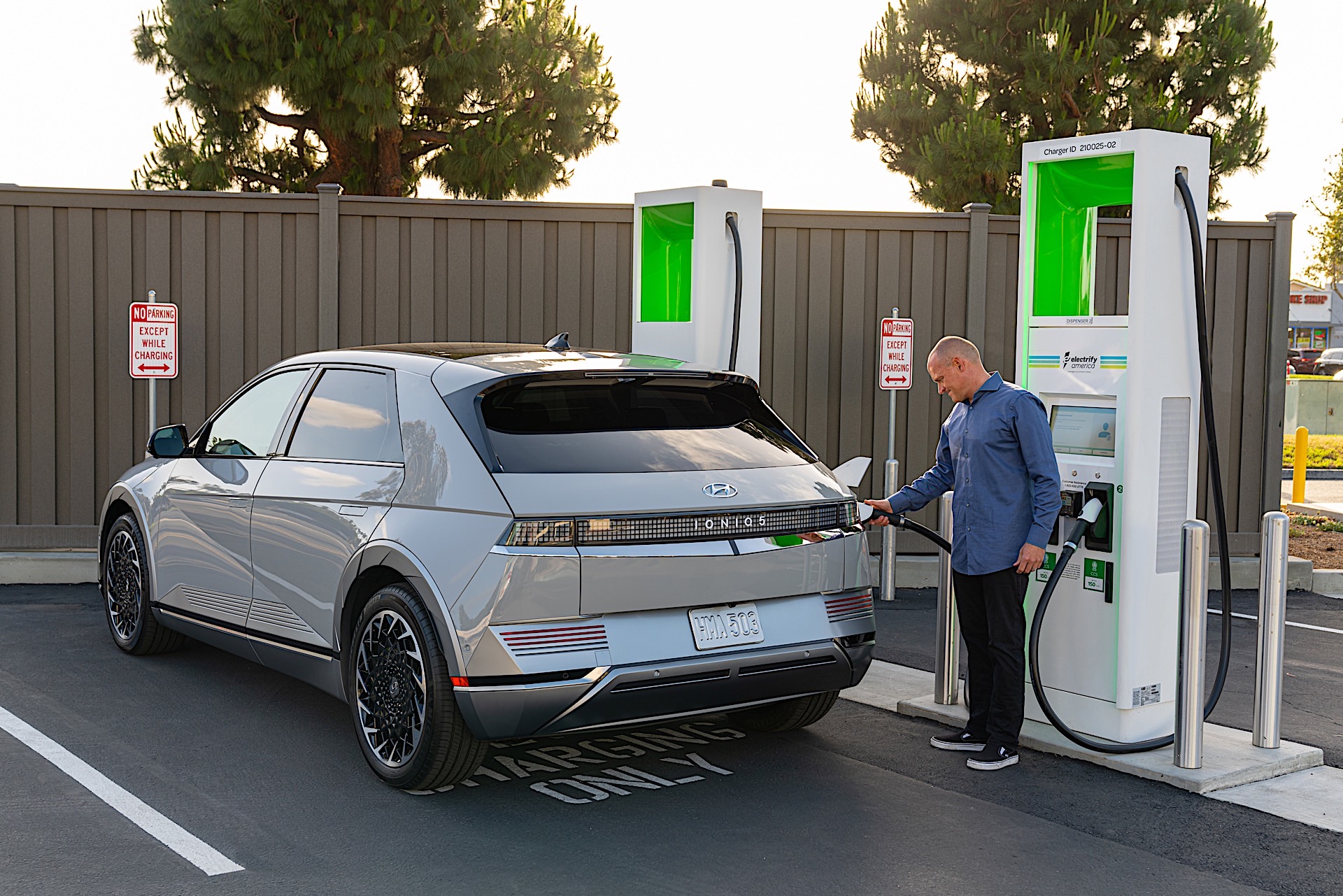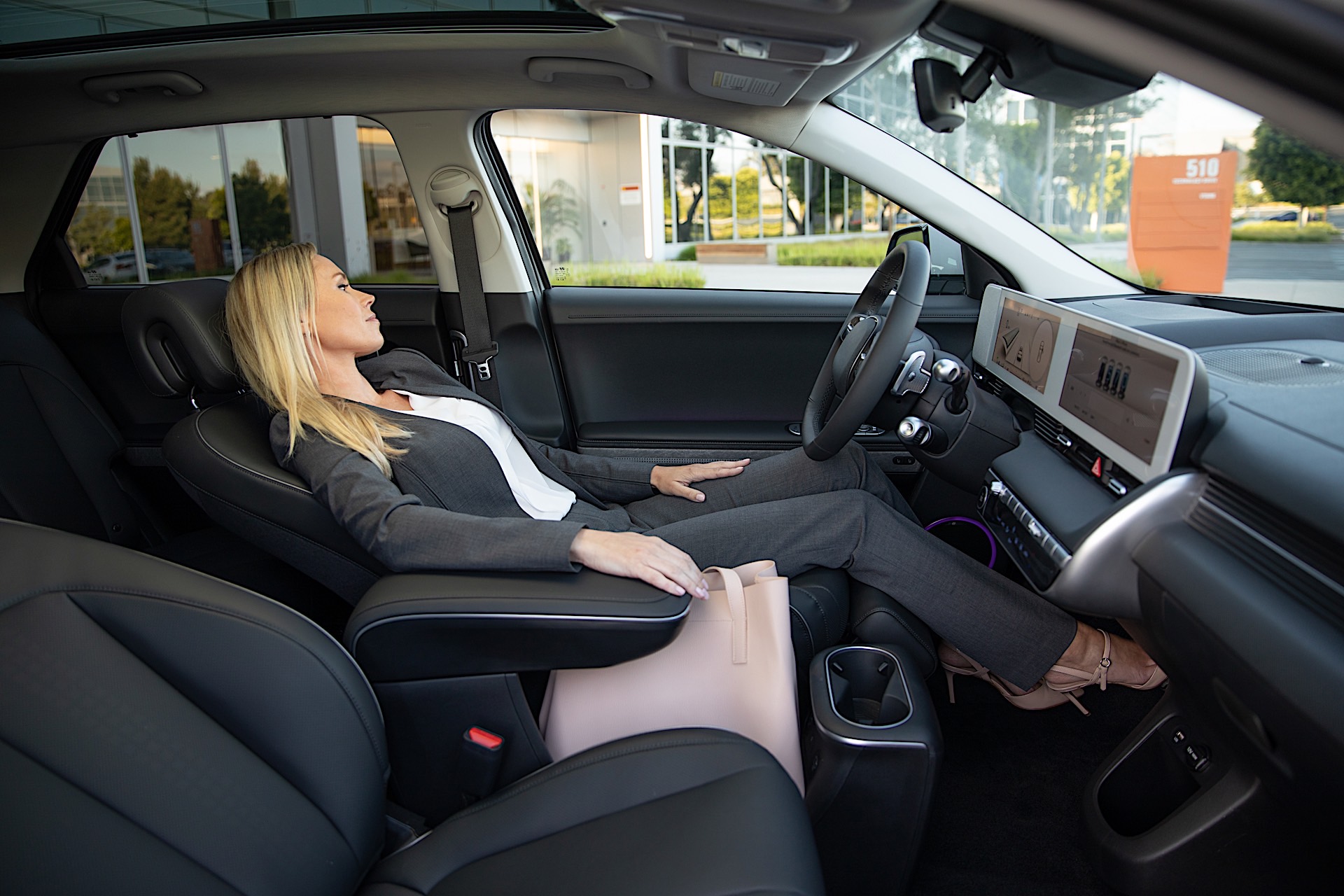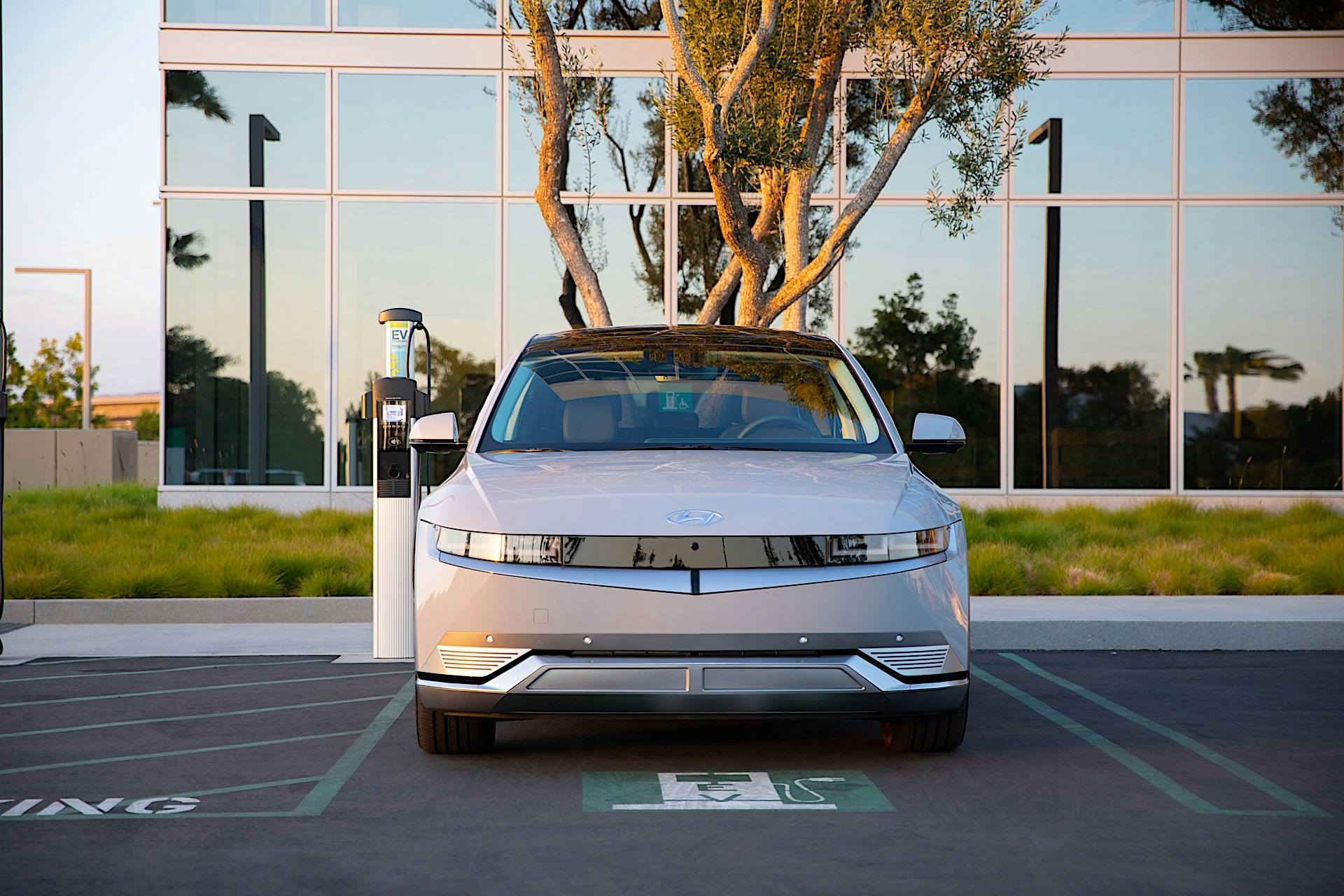Pictures don’t do the 2022 Hyundai Ioniq 5 justice. It looks like a tall hatchback in photos but once you see the car in the metal as we did recently at an undisclosed location, you’ll immediately notice just how big it is. The angular exterior and pixel-type LED lighting all to create a cohesive retro-futuristic battery-electric vehicle brimming with presence.
The Ioniq 5’s dimensions come into perspective once you’re right next to it. This EV is sizable. Its exterior footprint is similar to the average compact crossover like Hyundai’s own Tucson and the Toyota RAV4. However, the Ioniq 5 is lower in height and wider, giving it a low-slung stance to help it cheat the wind better. Functional aero bits like the roof spoiler further improve the car’s drag coefficient.

Moving inside, you’ll notice the benefits of Hyundai Motor Group’s E-GMP platform and the flat floor. You get nifty features like sliding and reclining rear seats, and a movable center console that can hold big handbags. The former gives you the flexibility to expand cargo or passenger space as needed, making the Ioniq 5 quite versatile. Since the center console isn’t connected with the dash, the driver and front passenger can exit on either side of the vehicle.
Regardless of where you’re sitting, occupants will be comfortable. Those in front will have supportive seats that can fully recline and have an ottoman. People in the back have generous recline from the seat backs. Thanks to the available glass roof, the Ioniq 5’s cabin feels open and you can close it, unlike most EVs.

Recycled and natural materials are used throughout the cabin, adding to the Ioniq 5’s sustainability credentials. Fit and finish seem very good with lots of soft surfaces throughout the cabin. Even the materials in the rear appear to be the same as the ones up front. The dash appears to be harder than certain parts but still of high quality. Hyundai extends the pixel theme into the interior with cool design cues on the doors and seats. Everything you touch is nicely textured. The buttons and knobs have a nice level of tactility when you operate them, too.
CHECK OUT: U.S.-spec Hyundai Ioniq 5 revealed, 300 miles of range
The rest of the interior is typical Hyundai, meaning it’s user-friendly, minimalist, and packed with tech features. You still have a volume knob but the tuning knob is now a switch. There are more capacitive buttons mixed with physical ones on the dash, the latter of which are shortcuts to frequently used functions. The lack of a traditional center console means accessing certain features like the heated and ventilated front seats and the heated steering wheel require going into the main display. Hyundai’s dual 12.0-inch display configuration looks slick yet the layout remains the same logical layout despite the addition of more submenus.
Overall, the Ioniq 5 is the next evolution of Hyundai’s design and tech philosophy. This brings concept car design into production nearly unchanged and pairs it with cutting-edge tech features that don’t sacrifice user-friendliness. Even with the certain functions moving into the main display, Hyundai appears to have kept everything as intuitive as possible. We’re looking forward to getting behind the wheel and driving the Ioniq 5 to see how it stands up against its chief rivals, which include the Ford Mustang Mach-E, Volkswagen ID.4, Kia EV6, Nissan Ariya, and the Tesla Model Y.

